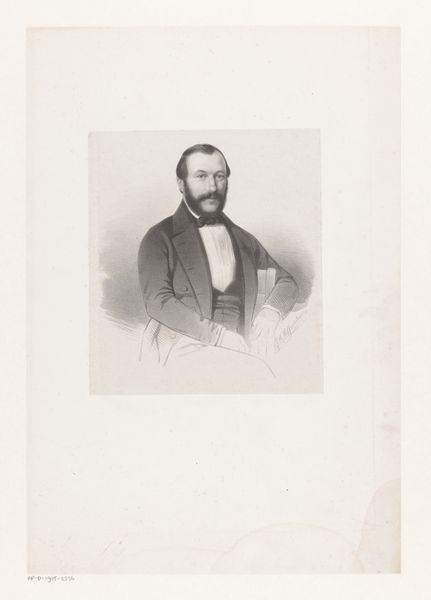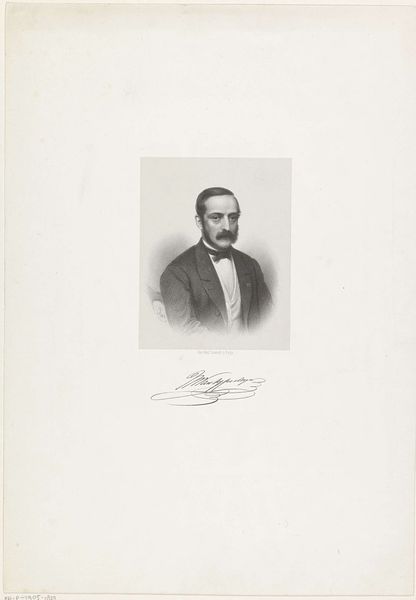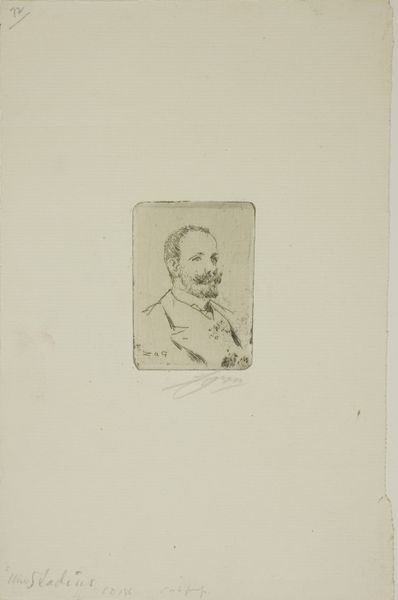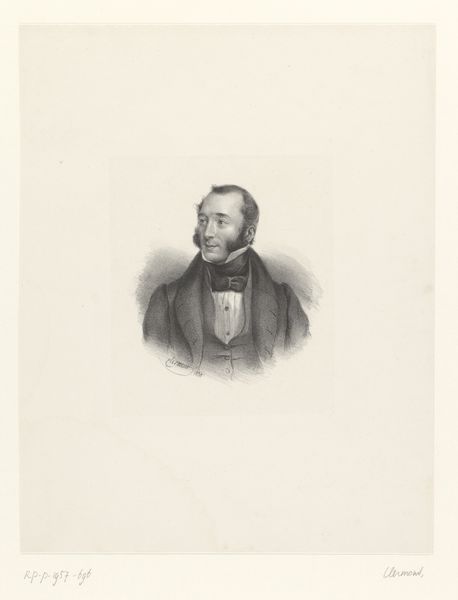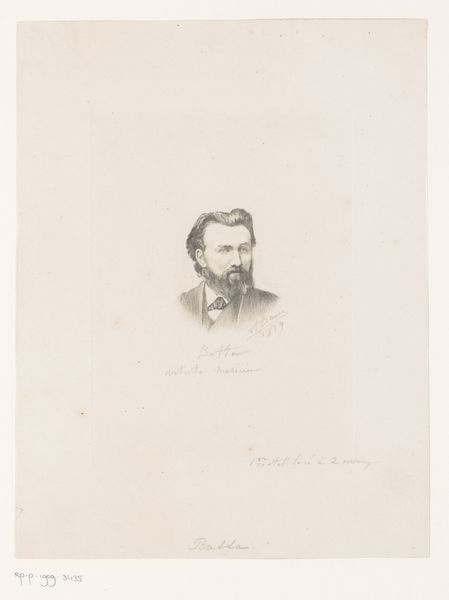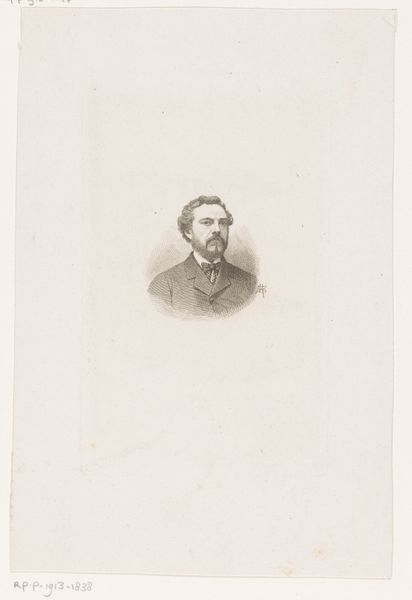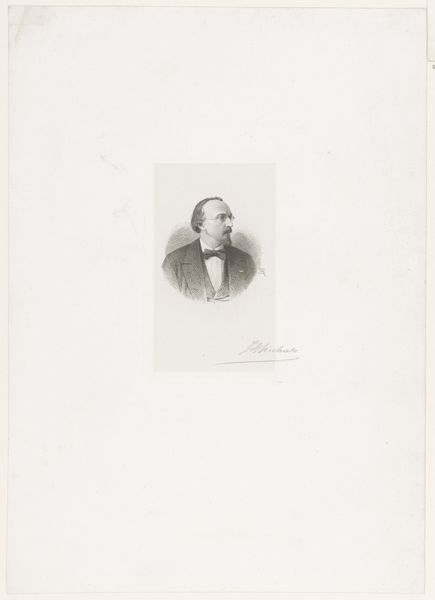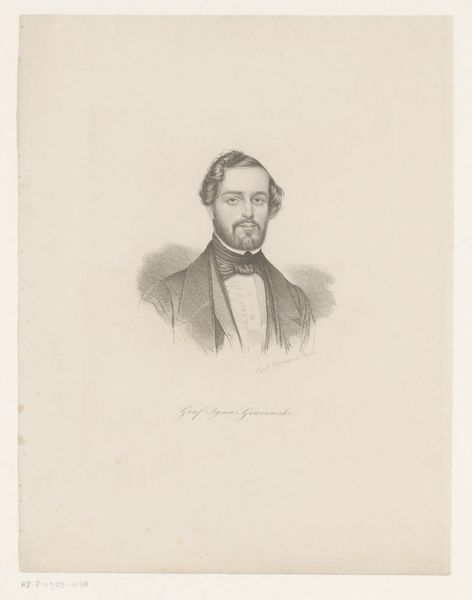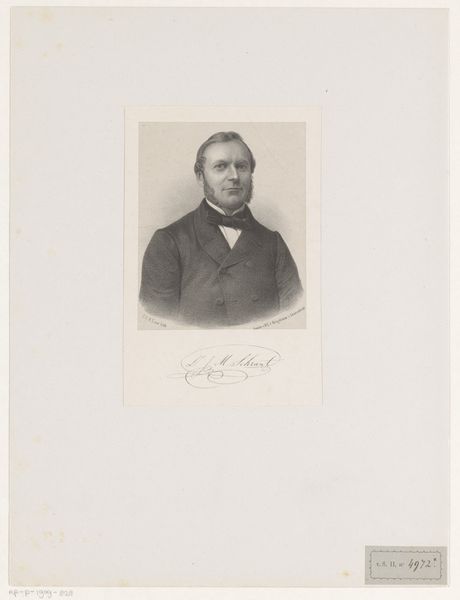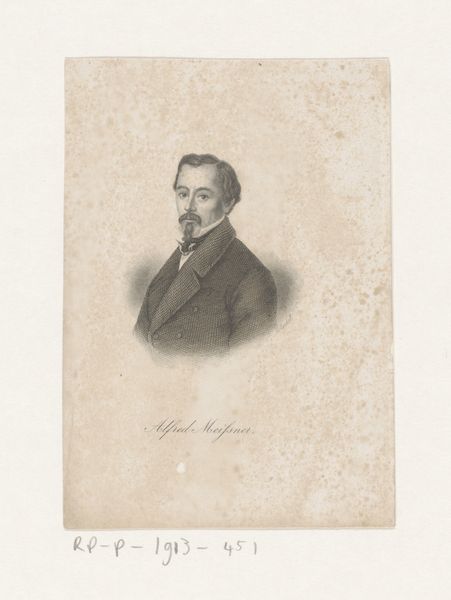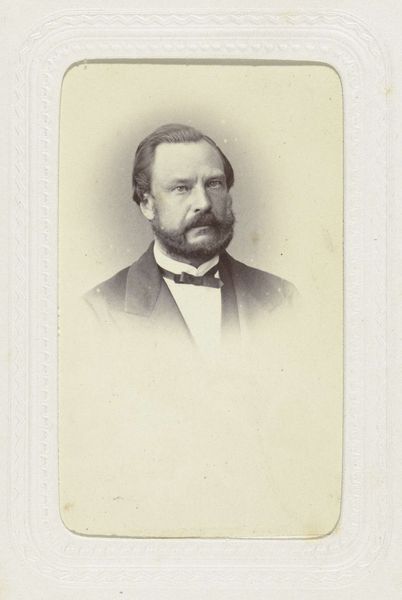
Portret van een onbekende man, mogelijk Julius de Geyter 1831 - 1890
0:00
0:00
print, engraving
#
portrait
#
16_19th-century
# print
#
old engraving style
#
pencil drawing
#
engraving
#
realism
Dimensions: height 125 mm, width 75 mm
Copyright: Rijks Museum: Open Domain
Editor: Here we have a 19th-century engraving from the Rijksmuseum, titled "Portret van een onbekende man, mogelijk Julius de Geyter." It's a rather formal portrait, very crisp and detailed, but there’s so much empty space around the figure that it gives me a sense of… isolation. What do you make of it? Curator: The emptiness you observe is a reflection of the evolving role of portraiture at this time. With the rise of photography, the societal function of the engraved portrait shifted. They were less about simply recording likeness, and more about projecting a specific image of the individual – one of intellect and perhaps, quiet dignity, in this case. Do you see how the engraving technique itself lends to that sense? Editor: I do see how the sharp lines and shading create that formality you're mentioning. Was engraving commonly used for portraits then, even with photography emerging? Curator: Exactly. Engraving retained prestige within certain social spheres. Prints, particularly in publications, were vehicles for disseminating particular messages or validating societal figures. The print here may speak to the rise of literacy or new cultural organizations. Can we tell to whom the figure may have been culturally linked from other clues in the work? Editor: I suppose his attire suggests a certain social standing. It's simple yet dignified, and this is echoed in the formal hairstyle, suggesting this unknown man was perhaps affiliated with formal institutions, like politics or literary groups. Curator: Precisely! The dissemination of imagery via prints allows these figures to become part of public and social discourse beyond the local level. A lot of it is very political in that regard. Editor: So the image is working within that established framework, even if it's of an unknown figure, and playing into how this image helps society function. It gives me a better perspective of portraiture during the time period. Curator: Agreed. Understanding that function provides crucial context for appreciating the work beyond just its aesthetic qualities.
Comments
No comments
Be the first to comment and join the conversation on the ultimate creative platform.
